Science Blogs
Blogs, magazines, and articles, mostly science and research related.
473 listings
|
Submitted Apr 14, 2005 to Science Blogs Salon Media Group, Inc. (OTC: SALN.0B) is an Internet media company that produces 7 original content sections as well as two online communities -- Table Talk and The WELL. The content sites, updated daily or more frequently, include News and Politics, Opinion, Technology & Business, Arts & Entertainment, Books, Life and Comics.
|
|
Submitted Apr 14, 2005 to Science Blogs Telecom is undergoing a revolution that will separate services from the underlying infrastructure and lead to major changes for users and the whole service supply chain. NGS's mission is to provide the most timely, accurate, and authoritative coverage of these developments.
|
|
Submitted Apr 05, 2005 to Science Blogs » Element FYI 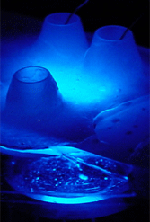 The National Science Foundation is harnessing the power of the internet to present fascinating multimedia overviews of the several areas of research funded by NSF. In the overview of Chemistry and Materials, otherwise known as the science of stuff, NSF covers the hottest new topics in the field, from concepts of emergence and self-organization to green chemistry to the creation of new molecules and materials. The cool, state-of-the-art research described here is far removed from those torturous lessons in balancing chemical equations that you covered in high school. Here you can find out about what scientists are doing now to understand not only how nature's materials behave at the molecular to nanoscale level, but how to control them and create new materials. Interested in a career in chemistry? This is the place to start. The National Science Foundation is harnessing the power of the internet to present fascinating multimedia overviews of the several areas of research funded by NSF. In the overview of Chemistry and Materials, otherwise known as the science of stuff, NSF covers the hottest new topics in the field, from concepts of emergence and self-organization to green chemistry to the creation of new molecules and materials. The cool, state-of-the-art research described here is far removed from those torturous lessons in balancing chemical equations that you covered in high school. Here you can find out about what scientists are doing now to understand not only how nature's materials behave at the molecular to nanoscale level, but how to control them and create new materials. Interested in a career in chemistry? This is the place to start. |
|
Submitted Mar 31, 2005 to Science Blogs » Element FYI 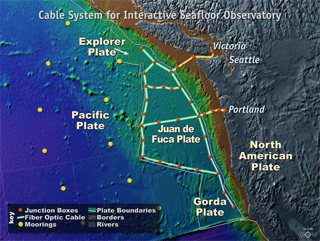 It is said that we know less about the Earth's oceans than we do about the entire surface of the moon, but advances in broadband communications may finally change all that. Several major research intiatives are underway to install cabled observatories offshore the US coastline. NEPTUNE, one of the first and most ambitious programs, intends to create a 2,000 mile-long cabled observatory that wraps around the Juan de Fuca and Gorda oceanic plates off the northwest US coast. Last year, NSF awarded $3.9 million to the University of Washington, University of California, San Diego, and partner institutions to create the Laboratory for the Ocean Observatory Knowledge Integration Grid, or LOOKING project, which will design the cyberinfrastructure that is central to NEPTUNE and other observatories, such as the Monterey Accelerated Research System (MARS) run by the Monterey Bay Aquarium Research Institute (MBARI). Coordination between the various research programs at the national level will be managed and operated by the Ocean Research Interactive Observatory Networks (ORION) program. When installed these observatories will provide for the first time the essential infrastructure needed for long-term, continuous, in situ observations in the deep sea, and will enable scientists to study the oceans from the comfort of their laptops. It is said that we know less about the Earth's oceans than we do about the entire surface of the moon, but advances in broadband communications may finally change all that. Several major research intiatives are underway to install cabled observatories offshore the US coastline. NEPTUNE, one of the first and most ambitious programs, intends to create a 2,000 mile-long cabled observatory that wraps around the Juan de Fuca and Gorda oceanic plates off the northwest US coast. Last year, NSF awarded $3.9 million to the University of Washington, University of California, San Diego, and partner institutions to create the Laboratory for the Ocean Observatory Knowledge Integration Grid, or LOOKING project, which will design the cyberinfrastructure that is central to NEPTUNE and other observatories, such as the Monterey Accelerated Research System (MARS) run by the Monterey Bay Aquarium Research Institute (MBARI). Coordination between the various research programs at the national level will be managed and operated by the Ocean Research Interactive Observatory Networks (ORION) program. When installed these observatories will provide for the first time the essential infrastructure needed for long-term, continuous, in situ observations in the deep sea, and will enable scientists to study the oceans from the comfort of their laptops. |
|
Submitted Mar 28, 2005 to Science Blogs » Element FYI 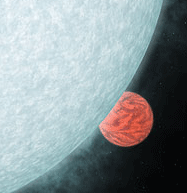 NASA completed an important first step last week in the effort to locate Earthlike planets outside of our solar system. Using the Spitzer Space Telescope, NASA captured direct infrared light from two extrasolar planets for the first time in history. This feat is exceptional given that planets do not give off their own light, but reflect light from their sun. NASA has prepared a long-term research plan dubbed Planet Quest that involves several missions scheduled over the next fifteen years with the objective of finding Earthlike planets outside our solar system. The Planet Quest website contains links to multimedia features and videos including Planet Quest: The Search for Another Earth and PlanetQuest: The Movie. Thus far NASA has indirectly identified more than 140 extrasolar planets, typically by measuring changes in the position or brightness of the host star (see Four ways to find a planet). The high temperatures of the two newly discovered planets, however, make the possibility of either planet supporting life unlikely. Spitzer was not originally designed to detect planets, making this discovery a bonus for the mission. NASA completed an important first step last week in the effort to locate Earthlike planets outside of our solar system. Using the Spitzer Space Telescope, NASA captured direct infrared light from two extrasolar planets for the first time in history. This feat is exceptional given that planets do not give off their own light, but reflect light from their sun. NASA has prepared a long-term research plan dubbed Planet Quest that involves several missions scheduled over the next fifteen years with the objective of finding Earthlike planets outside our solar system. The Planet Quest website contains links to multimedia features and videos including Planet Quest: The Search for Another Earth and PlanetQuest: The Movie. Thus far NASA has indirectly identified more than 140 extrasolar planets, typically by measuring changes in the position or brightness of the host star (see Four ways to find a planet). The high temperatures of the two newly discovered planets, however, make the possibility of either planet supporting life unlikely. Spitzer was not originally designed to detect planets, making this discovery a bonus for the mission. |
|
Submitted Mar 23, 2005 to Science Blogs » Element FYI 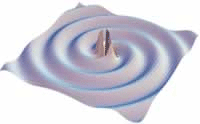 When Einstein published his Theory of General Relativity in 1916, he predicted the existence of gravitational waves, or ripples in the fabric of space-time created by cosmic events such as supernova explosions or colliding black holes. The technology needed to detect gravitational waves, however, has only recently been developed. In 1999 construction was completed on the US Laser Interferometer Gravitational Wave Observatory (LIGO), a $300 million project funded by the National Science Foundation, that consists of two facilities located in Hanford, Washington, and Livingston, Louisiana, that are designed to detect cosmic gravitational waves. The observational datasets generated by these facilities are so huge that Dr. Bruce Allen, Professor of Physics at the University of Wisconsin at Milwaukee and a former Ph.D. student of Stephen Hawking, has created the Einstein@home distributed computing project. The project will allow private computer users to search LIGO datasets for evidence of gravitational waves. Modeled on the SETI@home project, computer users download a screensaver program that crunches LIGO data while they are away from their computer. The project will search datasets from both US LIGO observatories as well as the UK-German-led GEO 600 observatory located in Hanover, Germany. The project began with 6,000 users when it launched on February 19th and within two weeks was adding users at a rate of about 1,000 per day. Einstein@home is supported by the American Physical Society as part of the World Year of Physics 2005 celebration. When Einstein published his Theory of General Relativity in 1916, he predicted the existence of gravitational waves, or ripples in the fabric of space-time created by cosmic events such as supernova explosions or colliding black holes. The technology needed to detect gravitational waves, however, has only recently been developed. In 1999 construction was completed on the US Laser Interferometer Gravitational Wave Observatory (LIGO), a $300 million project funded by the National Science Foundation, that consists of two facilities located in Hanford, Washington, and Livingston, Louisiana, that are designed to detect cosmic gravitational waves. The observational datasets generated by these facilities are so huge that Dr. Bruce Allen, Professor of Physics at the University of Wisconsin at Milwaukee and a former Ph.D. student of Stephen Hawking, has created the Einstein@home distributed computing project. The project will allow private computer users to search LIGO datasets for evidence of gravitational waves. Modeled on the SETI@home project, computer users download a screensaver program that crunches LIGO data while they are away from their computer. The project will search datasets from both US LIGO observatories as well as the UK-German-led GEO 600 observatory located in Hanover, Germany. The project began with 6,000 users when it launched on February 19th and within two weeks was adding users at a rate of about 1,000 per day. Einstein@home is supported by the American Physical Society as part of the World Year of Physics 2005 celebration. |
|
Submitted Mar 22, 2005 to Science Blogs » Element FYI  Don't let a silly thing like the SAT keep you from getting a world-class education. Thanks to MIT's OpenCourseWare project, you can now access materials from more than 900 MIT undergraduate and graduate courses for free, and no registration is required. MIT OpenCourseWare course materials include syllabi, reading lists, study materials, and, for some, even audio and video lectures. You can download lectures in MP3 format from Prof. Gerald E. Schneider's undergraduate course on Neuroscience and Behavior, for example, and listen to them on your iPod. The MIT OCW group expects to have 1800 courses online from all five of MIT's schools representing 33 disciplines by 2008. The things you don't get are access to MIT faculty and a degree at the end to hang on your wall, but those cost only an extra $30,800 per year in tuition and fees, and, oh yeah, that dreaded SAT score. Don't let a silly thing like the SAT keep you from getting a world-class education. Thanks to MIT's OpenCourseWare project, you can now access materials from more than 900 MIT undergraduate and graduate courses for free, and no registration is required. MIT OpenCourseWare course materials include syllabi, reading lists, study materials, and, for some, even audio and video lectures. You can download lectures in MP3 format from Prof. Gerald E. Schneider's undergraduate course on Neuroscience and Behavior, for example, and listen to them on your iPod. The MIT OCW group expects to have 1800 courses online from all five of MIT's schools representing 33 disciplines by 2008. The things you don't get are access to MIT faculty and a degree at the end to hang on your wall, but those cost only an extra $30,800 per year in tuition and fees, and, oh yeah, that dreaded SAT score. |
|
Submitted Mar 21, 2005 to Science Blogs » Element FYI 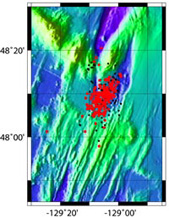 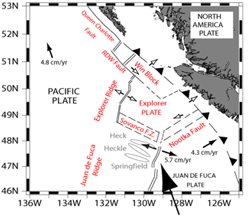 A five and half day swarm of small earthquakes was detected on the Endeavour segment of the Juan de Fuca Ridge offshore of the northwest coast of Washington beginning the morning of Sunday, February 27, 2005. Seismic monitoring by NOAA Vents Program scientists using the SOSUS array detected 3,742 earthquakes, the largest reaching a magnitude of 4.9. A rapid response geological survey of the area carried out 6 days later found no new lavas or hydrothermal disturbances at the seafloor, suggesting that the events were caused by an intrusion of magma from deep beneath the ridge crest. A five and half day swarm of small earthquakes was detected on the Endeavour segment of the Juan de Fuca Ridge offshore of the northwest coast of Washington beginning the morning of Sunday, February 27, 2005. Seismic monitoring by NOAA Vents Program scientists using the SOSUS array detected 3,742 earthquakes, the largest reaching a magnitude of 4.9. A rapid response geological survey of the area carried out 6 days later found no new lavas or hydrothermal disturbances at the seafloor, suggesting that the events were caused by an intrusion of magma from deep beneath the ridge crest. |
|
Submitted Mar 20, 2005 to Science Blogs » Element FYI 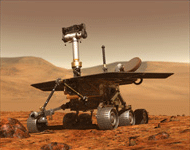 Has it been a year already? NASA landed its first Mars rover Spirit on January 3, 2004, which was soon followed by the rover Opportunity on January 24, 2004, after a seven-month journey of nearly 300 million miles from planet Earth. To celebrate this historic event, NASA has created a special Mars Anniversary Flash website that reviews the extraordinary accomplishments of the twin rover expeditions to Mars. Take a guided slide show and audio tour, or sit back and watch home movies of the landers as they navigate across the rocky terrain. The Flash website also provides glimpses of Mars missions to come including the Mars Reconnaissance Orbiter mission planned to launch in August of this year and arrive in 2006, the Mars Phoenix Lander mission scheduled to arrive on Mars in 2008, and the Mars Science Laboratory mission planned to arrive in 2010. Among the top priorities of these missions is to study the atmospheric and soil compositions to determine whether environmental conditions have existed that could support life on Mars. You can keep up with the daily progress of the current rover mission by visiting the Mars Exploration Rover Mission homepage. Has it been a year already? NASA landed its first Mars rover Spirit on January 3, 2004, which was soon followed by the rover Opportunity on January 24, 2004, after a seven-month journey of nearly 300 million miles from planet Earth. To celebrate this historic event, NASA has created a special Mars Anniversary Flash website that reviews the extraordinary accomplishments of the twin rover expeditions to Mars. Take a guided slide show and audio tour, or sit back and watch home movies of the landers as they navigate across the rocky terrain. The Flash website also provides glimpses of Mars missions to come including the Mars Reconnaissance Orbiter mission planned to launch in August of this year and arrive in 2006, the Mars Phoenix Lander mission scheduled to arrive on Mars in 2008, and the Mars Science Laboratory mission planned to arrive in 2010. Among the top priorities of these missions is to study the atmospheric and soil compositions to determine whether environmental conditions have existed that could support life on Mars. You can keep up with the daily progress of the current rover mission by visiting the Mars Exploration Rover Mission homepage. |
|
Submitted Mar 18, 2005 to Science Blogs » Element FYI |
|
Submitted Dec 05, 2004 to Science Blogs The Believer is an amiable yet rigorous forum for writing about books. It seeks to extend the ever-shortening shelf life of new books (and revives interest in books long overlooked), and stresses the interconnectivity of books to pop culture, politics, art, and music. To that end, the focus of the magazine includes essays on these topics, as well as lengthy interviews with philosophers, upholsterers, geneticists, and other great minds.
|
|
Submitted (Edited Nov 30, 2005) to Science Blogs » Element FYI » ELEMENT Features 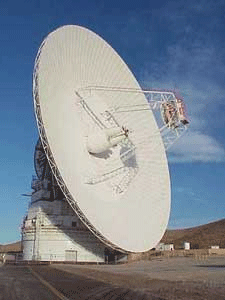 Effective immediately, all earthlings posting to craigslist will have an opportunity to earmark their message for inclusion in the historic transmission from Cape Canaveral, immediately following the launch of the Discovery Space Shuttle - currently scheduled for May 15, 2005. Deep Space Communications Network will transmit the postings, along with a personal video message from Craig, and a clip from the documentary "24 Hours on craigslist" light years into space, for the benefit and edification of potential future craigslist community members in the great beyond. Effective immediately, all earthlings posting to craigslist will have an opportunity to earmark their message for inclusion in the historic transmission from Cape Canaveral, immediately following the launch of the Discovery Space Shuttle - currently scheduled for May 15, 2005. Deep Space Communications Network will transmit the postings, along with a personal video message from Craig, and a clip from the documentary "24 Hours on craigslist" light years into space, for the benefit and edification of potential future craigslist community members in the great beyond. |
Submit
New Links
Most Popular
Quick Search
Statistics
3,012 listings in 21 categories, with 2,255,197 clicks. Directory last updated Sep 12, 2023.
Welcome Amara Fatima, the newest member.












